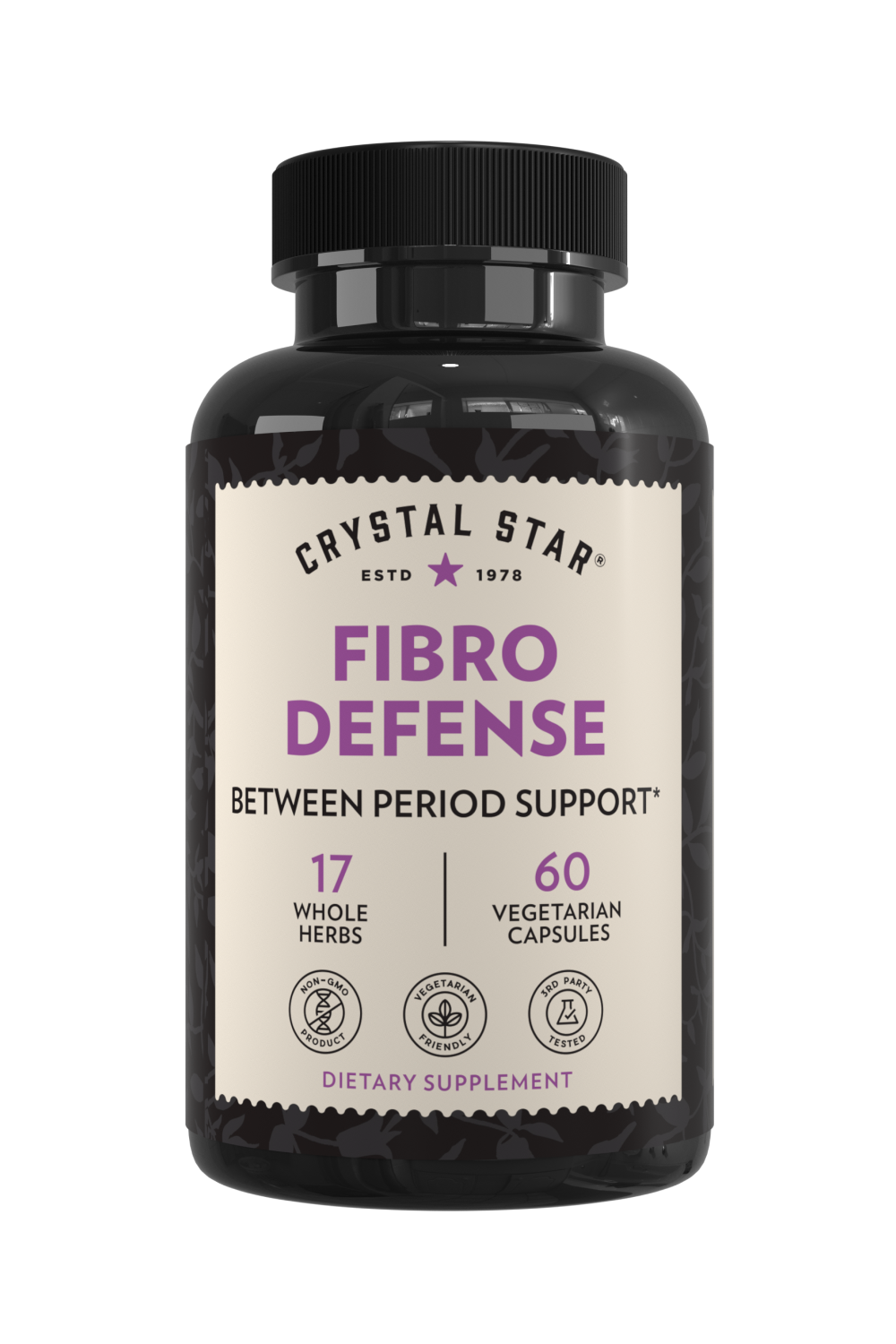
May 22, 2020
10 mins read
What is candida, and how can it affect your health?
If you find yourself with complicated health issues, you’ve probably heard of Candida. Typically living as natural, non-harmful fungi in the human body, Candida populations can sometimes overgrow and cause a myriad of health concerns.
But what does this fungal overgrowth actually do to the body?
Since the 1980s, healthcare professionals have debated the effects of excess Candida. From minor, superficial infections to fatal blood poisoning, scientists are still exploring this unpredictable organism today.
In this post, we’ll discuss what we know about Candida and how it functions. We’ll break down recent scientific studies to examine the possible causes for these tricky overgrowths.
 As humans, we have a community of microorganisms—bacteria, viruses, and fungi—that live in and on our bodies called our microbiome. This collection of organisms live symbiotically with us, helping to digest our food, absorb nutrients, and ward off infections.[1]
Candida is a genus of fungi that are a natural part of our microbiome. In total, there are about 200 species of Candida that live in the human gut, mouth, eyes, vagina, and on the skin.
However, Candida is known as an opportunistic fungus.[2] When our microbiomes are healthy and balanced, Candida harmlessly lives inside our bodies. However, if things become skewed in our microbiomes, Candida will jump on the opportunity to expand their numbers. This expansion, or overgrowth, can sometimes lead to Candida infections.
Although there are 200 species of Candida, only five of them cause 90 percent of Candida infections. The most common species to cause problems is Candida albicans. However, C. glabrata, C. parapsilosis, C. tropicalis, and C. krusei are also opportunistic and can wreak havoc on the body.[3]
As humans, we have a community of microorganisms—bacteria, viruses, and fungi—that live in and on our bodies called our microbiome. This collection of organisms live symbiotically with us, helping to digest our food, absorb nutrients, and ward off infections.[1]
Candida is a genus of fungi that are a natural part of our microbiome. In total, there are about 200 species of Candida that live in the human gut, mouth, eyes, vagina, and on the skin.
However, Candida is known as an opportunistic fungus.[2] When our microbiomes are healthy and balanced, Candida harmlessly lives inside our bodies. However, if things become skewed in our microbiomes, Candida will jump on the opportunity to expand their numbers. This expansion, or overgrowth, can sometimes lead to Candida infections.
Although there are 200 species of Candida, only five of them cause 90 percent of Candida infections. The most common species to cause problems is Candida albicans. However, C. glabrata, C. parapsilosis, C. tropicalis, and C. krusei are also opportunistic and can wreak havoc on the body.[3]
Resources: Amie Durenberger is a professional naturalist and science journalist located in Minneapolis, Minnesota. Since 2013, she has worked as an environmental educator, teaching children and adults about biodiversity, conservation, and edible & medicinal plant uses. Her favorite herbal preparations include fresh nettle tea, homemade plantain salve, and wild sumac lemonade. [1] https://www.ncbi.nlm.nih.gov/pmc/articles/PMC4528021/ [2] https://www.ncbi.nlm.nih.gov/pmc/articles/PMC3708393/ [3] https://rarediseases.info.nih.gov/diseases/1076/systemic-candidiasis [4] https://www.cdc.gov/fungal/diseases/candidiasis/invasive/ [5] https://www.emjreviews.com/nephrology/article/intra-abdominal-candidiasis/ [6] http://citeseerx.ist.psu.edu/viewdoc/download?doi=10.1.1.956.910&rep=rep1&type=pdf#page=68 [7] https://www.tandfonline.com/doi/full/10.4161/viru.22913 [8] https://www.merckmanuals.com/professional/immunology-allergic-disorders/immunodeficiency-disorders/chronic-mucocutaneous-candidiasis [9] https://www.ncbi.nlm.nih.gov/books/NBK367586/ [10]https://www.ncbi.nlm.nih.gov/books/NBK459317/ [11] https://www.cdc.gov/fungal/diseases/candidiasis/genital/index.html [12] https://www.cdc.gov/fungal/diseases/candidiasis/thrush/ [13] https://www.ncbi.nlm.nih.gov/pmc/articles/PMC3521253/ [14] https://www.merckmanuals.com/home/skin-disorders/fungal-skin-infections/candidiasis-yeast-infection [15] https://www.merckmanuals.com/home/skin-disorders/fungal-skin-infections/candidiasis-yeast-infection [16] http://citeseerx.ist.psu.edu/viewdoc/download?doi=10.1.1.956.910&rep=rep1&type=pdf#page=1 [17] https://www.sciencedirect.com/science/article/pii/S0944501313000293 [18] https://www.nigms.nih.gov/education/pages/factsheet_sepsis.aspx [19] https://rarediseases.info.nih.gov/diseases/1076/systemic-candidiasis [20] https://www.tandfonline.com/doi/full/10.4161/viru.22913 [21] https://rarediseases.info.nih.gov/diseases/1076/systemic-candidiasis [22] https://www.cdc.gov/fungal/diseases/candidiasis/invasive/risk-prevention.html [23] https://academic.oup.com/cid/article/62/4/e1/2462830 [24] https://www.sciencedirect.com/science/article/pii/S0944501313000293 [25] https://core.ac.uk/download/pdf/82592614.pdf [26] https://www.cdc.gov/fungal/diseases/candidiasis/invasive/risk-prevention.html [27] https://rarediseases.info.nih.gov/diseases/1076/systemic-candidiasis [28] https://www.ncbi.nlm.nih.gov/pubmed/15907554 [29] https://www.cdc.gov/fungal/diseases/candidiasis/invasive/treatment.html
What is Candida?
 As humans, we have a community of microorganisms—bacteria, viruses, and fungi—that live in and on our bodies called our microbiome. This collection of organisms live symbiotically with us, helping to digest our food, absorb nutrients, and ward off infections.[1]
Candida is a genus of fungi that are a natural part of our microbiome. In total, there are about 200 species of Candida that live in the human gut, mouth, eyes, vagina, and on the skin.
However, Candida is known as an opportunistic fungus.[2] When our microbiomes are healthy and balanced, Candida harmlessly lives inside our bodies. However, if things become skewed in our microbiomes, Candida will jump on the opportunity to expand their numbers. This expansion, or overgrowth, can sometimes lead to Candida infections.
Although there are 200 species of Candida, only five of them cause 90 percent of Candida infections. The most common species to cause problems is Candida albicans. However, C. glabrata, C. parapsilosis, C. tropicalis, and C. krusei are also opportunistic and can wreak havoc on the body.[3]
As humans, we have a community of microorganisms—bacteria, viruses, and fungi—that live in and on our bodies called our microbiome. This collection of organisms live symbiotically with us, helping to digest our food, absorb nutrients, and ward off infections.[1]
Candida is a genus of fungi that are a natural part of our microbiome. In total, there are about 200 species of Candida that live in the human gut, mouth, eyes, vagina, and on the skin.
However, Candida is known as an opportunistic fungus.[2] When our microbiomes are healthy and balanced, Candida harmlessly lives inside our bodies. However, if things become skewed in our microbiomes, Candida will jump on the opportunity to expand their numbers. This expansion, or overgrowth, can sometimes lead to Candida infections.
Although there are 200 species of Candida, only five of them cause 90 percent of Candida infections. The most common species to cause problems is Candida albicans. However, C. glabrata, C. parapsilosis, C. tropicalis, and C. krusei are also opportunistic and can wreak havoc on the body.[3]
What is candida auris?
A new species of Candida emerged in 2009 called Candida auris. Scientists first spotted this organism in patients in Japan, but retrospectively found its presence in South Korean strain collections dating back to 1996. In 2013, C. auris first appeared in the United States and is now a very concerning global pathogen. [socialpug_tweet tweet="There are 200 species of Candida, but only five of them cause 90 percent of Candida infections." display_tweet=""] Unlike C. albicans, C. auris is a species of Candida that is highly resistant to antifungal therapy. C. auris can also resist some hospital disinfectants, can travel from person to person, and has caused several infectious outbreaks in healthcare settings. Because of this, hospital patients are most likely to contract C. auris and develop an infection. The U.S. Center for Disease Control and Prevention, or the CDC, conducted DNA tests that suggest that C. auris did not arise in one location and then spread to other countries. Instead, the pathogen appears to have emerged independently in different areas of the world at roughly the same time. In the U.S., most cases of C. auris have occurred in New York City, New Jersey, and Chicago.[4]What is a candida infection?
If Candida begins to overgrow in the body, it can potentially cause a Candida infection, or candidiasis. Currently, there are two recognized forms of candidiasis: superficial and invasive.[5] However, many people believe there is a third medical condition caused by Candida.What is superficial candidiasis?
Superficial candidiasis occurs when Candida overgrows and causes a mucosal infection. Typical sites for superficial candidiasis include the mouth, esophagus, ear, skin, nails, or vagina.[6] [socialpug_tweet tweet="Nearly 75 percent of women experience at least one vaginal yeast infection in their lifetime." display_tweet=""] These infections can cause itching, white patches or discharge, and minor pain. On the bright side, these infections are easy to diagnose and simple to treat with prescription antifungals. Superficial candidiasis can occur in otherwise healthy individuals and is very common. If you’ve ever taken a dose of antibiotics and then developed a vaginal yeast infection, you’ve had superficial candidiasis. But don’t worry—nearly 75 percent of women experience at least one vaginal yeast infection in their lifetime.[7] Sometimes superficial candidiasis can reappear after treatment; this is called chronic mucocutaneous candidiasis. Individuals who have frequent infections may have hormonal imbalances or immune system issues that cause the recurrence.What are the symptoms of superficial candidiasis?
Skin: cracking, discoloration, irritation, and skin lesions[8] Mouth: white patches on the tongue, sore throat, painful swallowing, and dry mouth[9] Vagina: itching, burning, painful sex, and thick, and white discharge[10] [socialpug_tweet tweet="Antibiotics, corticosteroids, or weakened immune systems are risk factors for superficial yeast infections." display_tweet=""]What causes superficial candidiasis?
There are a few universal risk factors for superficial candidiasis. Individuals who use antibiotics, corticosteroids, or have weakened immune systems have a higher risk of developing these infections.[11] [12] One study in Korea found that many patients with superficial esophageal candidiasis had recent antibiotic treatment, corticosteroid use, herbal therapy, or substantial drinking activity.[13] Additional risk factors for superficial candidiasis depend on the location of the overgrowth. Cutaneous candidiasis, or a candida skin infection, can sometimes be caused by excess moisture on the skin. This can arise from humid weather, tight clothing, or poor hygiene.[14] Oral thrush, or a candida infection in the mouth, can be caused by medications that create dry mouth, smoking, or from wearing dentures. Vaginal yeast infections can be caused by antibiotic use, pregnancy, or birth control pills.How can I treat superficial candidiasis?
Doctors often prescribe antifungal drugs to treat superficial Candida infections. Depending on the location of your candidiasis, physicians may suggest antifungal creams, lozenges, liquids, suppositories, or oral pills as treatment. Some of these are even available as over-the-counter medications. If you have recurrent infections, your doctor may recommend a longer duration of antifungal therapy.[15]What is invasive candidiasis?
While rare, invasive candidiasis is much more serious than a superficial infection. Instead of an isolated disease in one area of the body, these overgrowths can spread to the bloodstream and infect vital organs, including the brain, heart, and kidneys.[16] This condition is also known as systemic or disseminated candidiasis due to its ability to spread through the body.[17] The most common form of invasive candidiasis is candidemia, or a Candida bloodstream infection. If candidemia is left untreated, the blood can become poisoned. [socialpug_tweet tweet="Individuals who use antibiotics, corticosteroids, or have weakened immune systems have a higher risk of developing these infections." display_tweet=""] Blood poisoning, also known as sepsis, sends the body into a state called septic shock. It can cause blood pressure to become dangerously low and may result in multiple organ failure.[18] These infections are rate, but can be fatal and have mortality rates ranging from 19-30 percent.What are the symptoms of invasive candidiasis?
Pinpointing symptoms for invasive candidiasis can be tricky. Many individuals who develop invasive Candida infections are already critically ill. This can make it challenging to determine which symptoms are actually from the candida infection. However, the most common symptom of invasive candidiasis is fever and chills that do not respond to antibiotics. Additional symptoms vary depending on the organ infected.[19]What causes invasive candidiasis?
Studies show that spending extended time in hospitals can significantly increase your risk of developing invasive candidiasis.[20] [21] But how can a medical setting be a risk factor? Antibiotic overuse, treatments that compromise your immune system, and hospital sanitation issues can all increase your risk for invasive candidiasis.[22]Antibiotic overuse can cause invasive candidiasis
According to the Infectious Diseases Society of America, invasive Candida infections are a product of medical progress and antibiotic overuse.[23] Even though antibiotic drugs can be life-saving, overuse of these medications can wipe out both harmful and beneficial microbes.[24] When this disruption occurs, C. albicans can overgrow and colonize the body. Many studies have confirmed this connection between broad-spectrum antibiotics and invasive candidiasis. One observed that 92 percent of subjects with candidemia had recently received treatment with broad-spectrum antibiotics.[25]Can a compromised immune system cause a candida infection?
Medical conditions that compromise the immune system can be risk factors for invasive candidiasis. Individuals with diabetes, kidney failure, or AIDS have an increased risk for these infections.[26] Invasive procedures such as organ transplants or gastrointestinal surgeries can also increase your risk for invasive candidiasis.[27] Cancer treatments such as chemotherapy are also known to weaken the immune system, and one study showed that a third of patients with invasive candidiasis had received treatment for cancer.[28] Remember, taking antibiotics, in general, doesn’t mean you’re at risk for developing an invasive Candida infection. But if you have been taking them long term, have spent extended time in the ICU, or are significantly immunocompromised, you may want to consult your physician. [socialpug_tweet tweet="Taking antibiotics, in general, doesn’t mean you’re at risk for developing an invasive Candida infection. " display_tweet=""]How do you treat invasive candidiasis?
Invasive candidiasis is a serious condition that can be fatal. If you suspect you have a Candida infection, you should contact your doctor immediately. Typically, doctors prescribe antifungal drugs to treat both superficial and invasive candidiasis. Depending on the severity of your infection, your doctor may suggest intravenous (IV) antifungals or prescription pills. Some common antifungal medications include fluconazole, nystatin, and Caspofungin.[29]With Candida, it’s all about balance
It’s important to remember that Candida fungi are natural inhabitants of the human body. Their presence inside of us can be a sign of balance and wellbeing. However, their overgrowth can be a risk factor for physical illness.Overgrowth of Candida can cause superficial infections of the mouth, vagina, and skin. These conditions are often easy to diagnose and treat. But, individuals who experience an overgrowth with a severely compromised immune system are at risk for invasive candidiasis. Whether you experience unusual superficial symptoms or the more serious signs of invasive Candida, you should contact your physician immediately to discuss treatment. If you’re hoping to prevent a case of candidiasis, there are a few things to keep in mind. Having good personal hygiene, reducing your antibiotic use, and promoting your immune system are all great ways to avoid the risk of a Candida infection. Like most things in this world, Candida is neither good nor bad, just an issue of balance.Resources: Amie Durenberger is a professional naturalist and science journalist located in Minneapolis, Minnesota. Since 2013, she has worked as an environmental educator, teaching children and adults about biodiversity, conservation, and edible & medicinal plant uses. Her favorite herbal preparations include fresh nettle tea, homemade plantain salve, and wild sumac lemonade. [1] https://www.ncbi.nlm.nih.gov/pmc/articles/PMC4528021/ [2] https://www.ncbi.nlm.nih.gov/pmc/articles/PMC3708393/ [3] https://rarediseases.info.nih.gov/diseases/1076/systemic-candidiasis [4] https://www.cdc.gov/fungal/diseases/candidiasis/invasive/ [5] https://www.emjreviews.com/nephrology/article/intra-abdominal-candidiasis/ [6] http://citeseerx.ist.psu.edu/viewdoc/download?doi=10.1.1.956.910&rep=rep1&type=pdf#page=68 [7] https://www.tandfonline.com/doi/full/10.4161/viru.22913 [8] https://www.merckmanuals.com/professional/immunology-allergic-disorders/immunodeficiency-disorders/chronic-mucocutaneous-candidiasis [9] https://www.ncbi.nlm.nih.gov/books/NBK367586/ [10]https://www.ncbi.nlm.nih.gov/books/NBK459317/ [11] https://www.cdc.gov/fungal/diseases/candidiasis/genital/index.html [12] https://www.cdc.gov/fungal/diseases/candidiasis/thrush/ [13] https://www.ncbi.nlm.nih.gov/pmc/articles/PMC3521253/ [14] https://www.merckmanuals.com/home/skin-disorders/fungal-skin-infections/candidiasis-yeast-infection [15] https://www.merckmanuals.com/home/skin-disorders/fungal-skin-infections/candidiasis-yeast-infection [16] http://citeseerx.ist.psu.edu/viewdoc/download?doi=10.1.1.956.910&rep=rep1&type=pdf#page=1 [17] https://www.sciencedirect.com/science/article/pii/S0944501313000293 [18] https://www.nigms.nih.gov/education/pages/factsheet_sepsis.aspx [19] https://rarediseases.info.nih.gov/diseases/1076/systemic-candidiasis [20] https://www.tandfonline.com/doi/full/10.4161/viru.22913 [21] https://rarediseases.info.nih.gov/diseases/1076/systemic-candidiasis [22] https://www.cdc.gov/fungal/diseases/candidiasis/invasive/risk-prevention.html [23] https://academic.oup.com/cid/article/62/4/e1/2462830 [24] https://www.sciencedirect.com/science/article/pii/S0944501313000293 [25] https://core.ac.uk/download/pdf/82592614.pdf [26] https://www.cdc.gov/fungal/diseases/candidiasis/invasive/risk-prevention.html [27] https://rarediseases.info.nih.gov/diseases/1076/systemic-candidiasis [28] https://www.ncbi.nlm.nih.gov/pubmed/15907554 [29] https://www.cdc.gov/fungal/diseases/candidiasis/invasive/treatment.html








